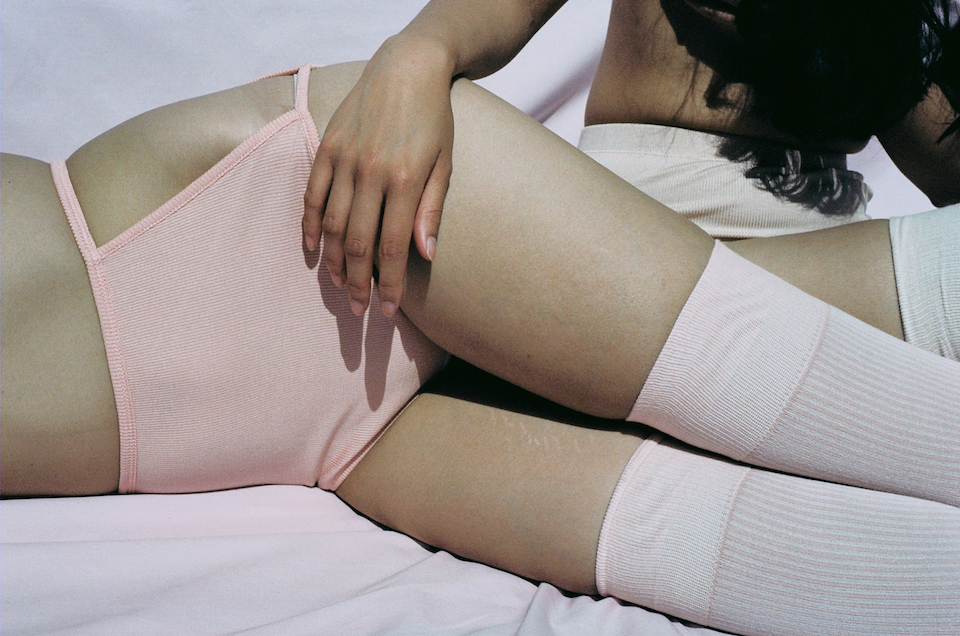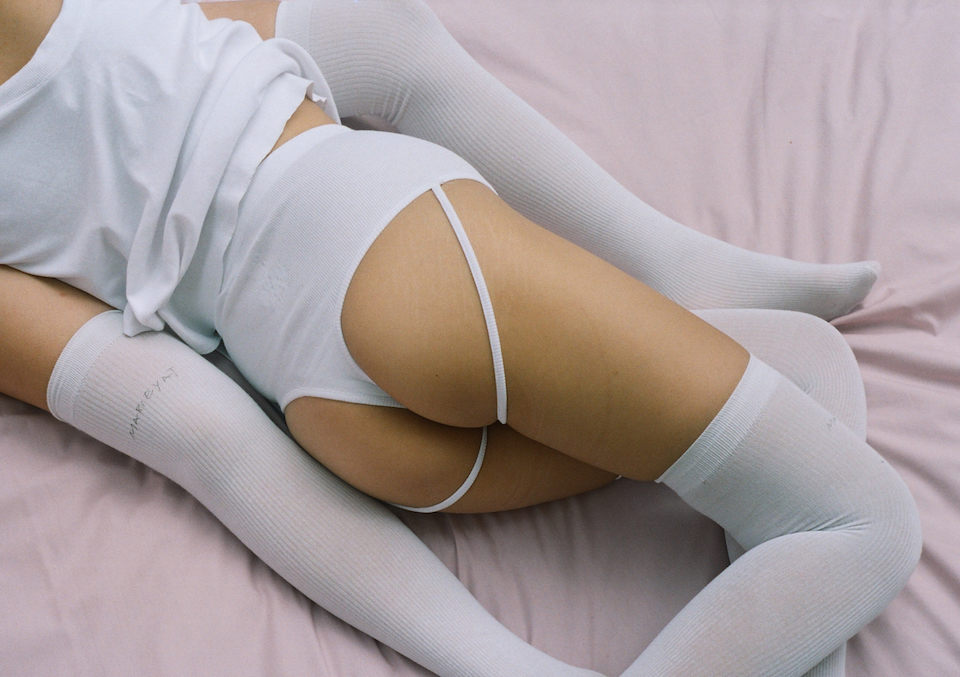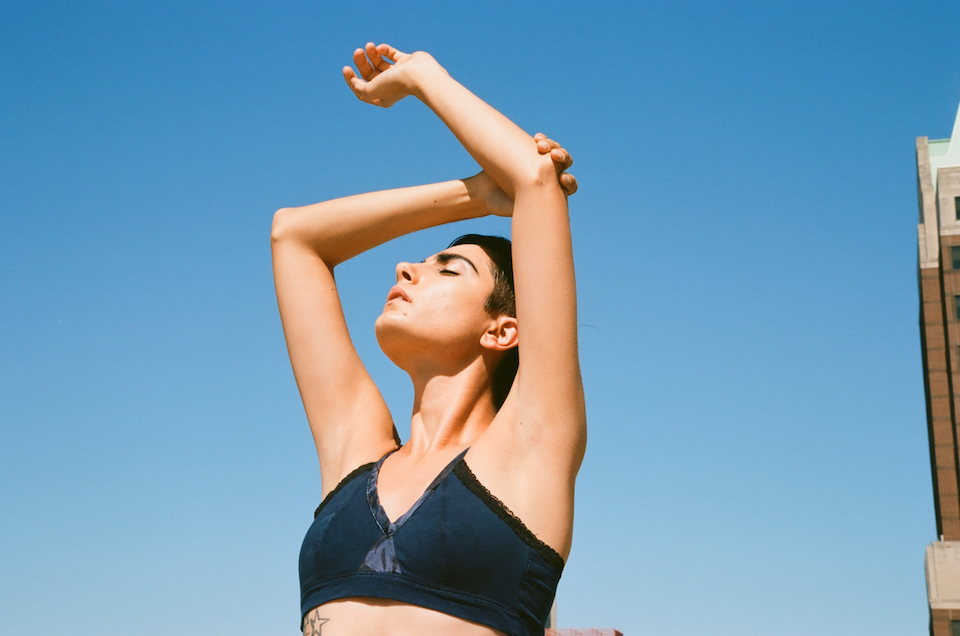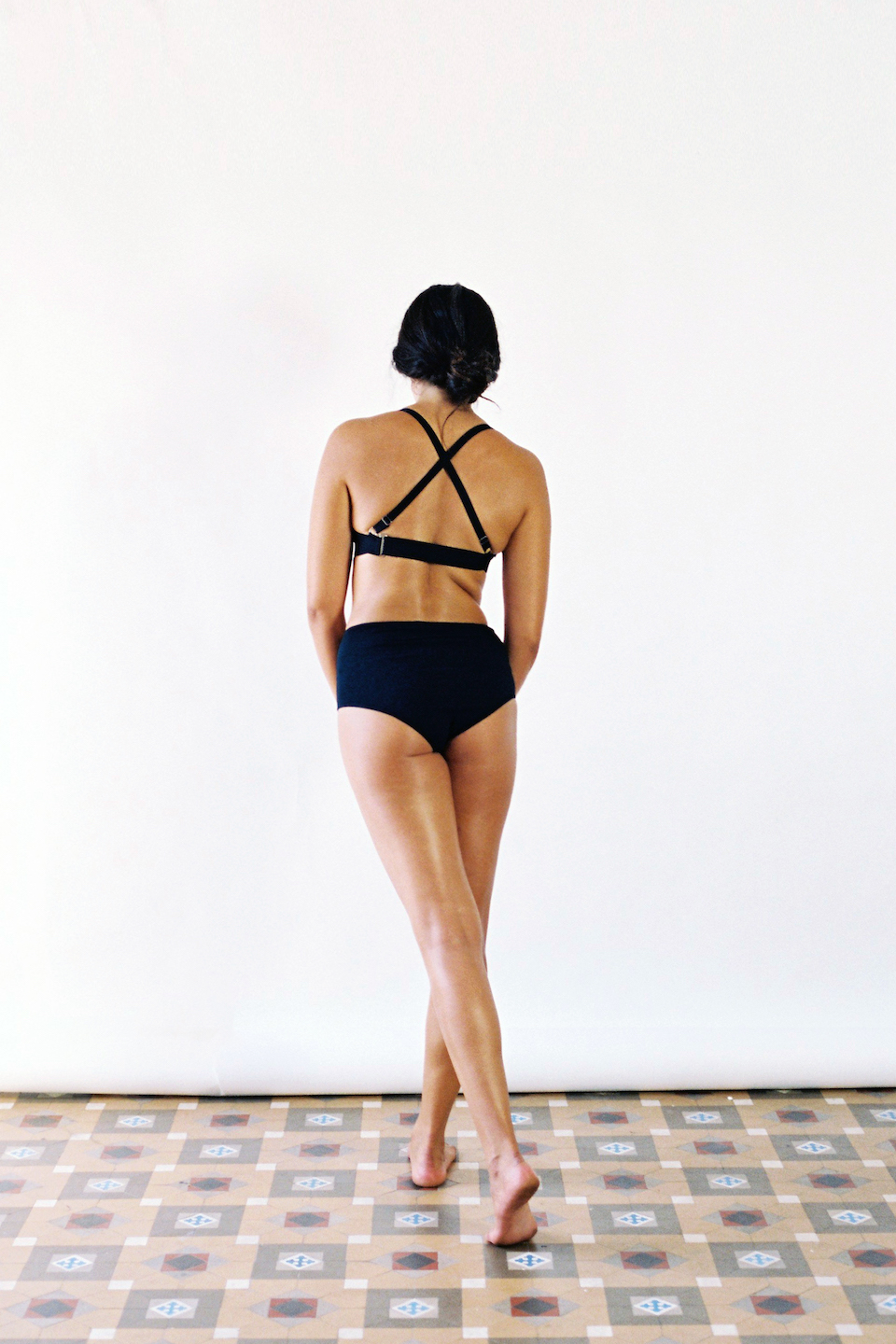Bare Essentials
Lingerie brands have long stuck to stereotypes of sexy. These three brands are tackling the gap in the market with underwear that offers comfort and understated appeal.

Lingerie brands have long stuck to stereotypes of sexy. These three brands are tackling the gap in the market with underwear that offers comfort and understated appeal.
For a long time, buying women’s underwear meant choosing between stereotypically sexy, frilly lingerie or bland, frumpy basics. Middle ground offerings were a narrow space of overpriced pieces and underwear that often included infantile patterns or threadbare stripes. But with the rise of online businesses has come a proliferation of retail startups and independent labels tackling this gap in hopes of shaking up the underwear market and offering more diversity. One trend in particular that seems to have tightened its grip on underwear and lingerie collections is 1990s minimalism. Playing up comfort and understated appeal, designers in this movement are ditching embellishments in favour of seamless pieces and neutral shades.
Since 2009, the retail revenue of the global lingerie market has been steadily increasingly and is slated to reach $82 billion this year, according to data by Statista. In Europe and the US, the market has been dominated by behemoths like Victoria’s Secret, Calzedonia Group, Triumph International and Hanes for decades. In an interesting anomaly, the UK underwear market is ruled by Marks and Spencer with a 26 percent market share.
While plenty of mainstream lingerie has been designed to change women’s body shapes and cater to the male gaze, a new crop of brands are challenging these notions with minimalist intimates designed for both comfort and sensuality. Instead of thongs and lace contraptions, consumers are opting for fuller underwear shapes and non-wired garments. In 2014, sales of thongs decreased by 7 percent while sales of full-bottomed shapes increased by 17 percent, according to research company NPD Group.
"The global online lingerie market is forecast to grow at a CAGR of 17.25 percent from 2016 to 2020"
Not only that, buyers are now expecting more from underwear than just a range of appealing and non-fussy items. They’re keen to learn about company values, production processes and approaches to design. This new shift towards conscientious consumption has spawned a number of labels that offer a compelling narrative, employ an ethical supply chain and emphasise authenticity. In contrast to established brands like Victoria’s Secret and Wolf Lingerie, who usually advertise with flawless-looking models in hypersexual poses, these emerging labels typically feature a more diverse array of women and as little retouching as possible in campaign imagery and lookbooks.
Ultimately, these elements reflect the thinking that undergarments should be about instilling a sense of comfort and confidence in your own skin. Unsurprisingly, many entrepreneurs who have kickstarted ventures determined to fill this in-between space in the market are women. Women who itched for more variety when it came to underwear and wanted to create pieces that made them look and feel good about themselves.
According to market research firm Research and Markets, the global online lingerie market is forecast to grow at a CAGR of 17.25 percent during between 2016 to 2020. Although buying lingerie online has become more fathomable with the prevalence of detailed size guides and improved customer-care services, it’s not without its challenges. Still, it can be difficult to convince the consumer of fit or quality of fabrics without having them try the garment or touch the textiles. On the other hand, these brands can reach a bigger audience with their message and tap into customers around the world by capturing and communicating their brand ethos through carefully curated social media channels.

MARIEYAT
By blending minimal and androgynous elements with bold details, Marie Yat creates eye-catching designs that stray from mainstream ideas of what lingerie looks like.
“I used to put on really frilly or restricted pieces of lingerie and would feel like I didn’t have the body for it – it just wasn't me,” says Yat, who was born in Hong Kong and is now based in London. “I wanted to bring a spirit to my designs where you're wearing this seamless garment and there's nothing to hide. Once you put it on, it is what it is and it shapes how your body is shaped. It’s very honest.”
Like many founders of lingerie labels that have emerged in recent years, Yat got the idea for her eponymous underwear and loungewear brand MARIEYAT when the options available in the market failed to meet her standards. “When I went shopping for lingerie, I always saw the same kind of thing and felt something was lacking,” she recalls, “I’ve always been into unisex garments and thought it’d be great if there was something that could match what I was looking for.”
“I wanted to bring a spirit to my designs where you're wearing this seamless garment and there's nothing to hide. Once you put it on, it is what it is and it shapes how your body is shaped."
After graduating from Central Saint Martin in London with a BA in Fashion Design, Yat immediately began working on her label and debuted it to the public in summer 2015. Her pieces feature a soft, neutral colour palette and typically take on unconventional shapes that strike a balance between comfort, sensuality and versatility. For instance, one of the staple designs from her latest collection, dubbed ‘G-Tang’, sees a high-waisted brief with a simple drop binding that elegantly cups the buttocks. On the idea behind it, Yat says it was inspired by her friend, Gwyneth. “We were hanging out in her bedroom and she was wearing this pair of underwear which was so torn that a binding was hanging off under her bottom – I couldn’t stop looking at it,” she recounts, “And I thought, ‘Wow, this is very flattering,’ and began exploring that element.”
Yat’s collection is crafted from natural materials, such as cotton and silk, and produced in China. Although the ‘Made in China’ stamp is often construed as low-quality, she's determined to shift attitudes around it by working with ethical Chinese manufacturers that produce well-made garments.
While Yat acknowledges that the changing underwear business is moving towards more comfortable and minimalist alternatives at the moment, she doesn’t think there will be a complete shift in the industry. “I think there should always be a variety of options to cater to different people with different needs,” she adds.

Brook There
Brook DeLorme has been making clothes for herself since she was 12. As someone who has always been sensitive to undergarments, she was constantly on the hunt for bras that were comfortable and flattering yet provided adequate support and coverage. Without much luck finding these kinds of pieces in her hometown of Portland, Maine, DeLorme started a clothing line with her husband in 2007 shortly after graduating from a fashion design program in college. The duo later shifted gears in 2012 and relaunched the brand as Brook There, a label focusing on sustainably made underwear and loungewear cut and sewn in the U.S.
“It took several years of experimentation to really develop the underwear line because even though it doesn't look like it from the outside, making stretchy things that fit well is really complicated,” says DeLorme. Nowadays, Brook There is known for its thoughtful and pragmatic pieces made of organic cotton, silks and wools – all of which are produced in the US.
The interest in using organic cotton for her line stems not only from the fabric’s smaller environmental impact when compared to conventional cotton, but also from DeLorme’s childhood. “I grew up with a family that was a looking for organic food before it became popular in the US,” she explains, “And my parents both have organic farms... So I've just been exposed to that as a preference for a long time. “
Since starting her clothing line, LeDorme has seen many underwear and lingerie brands come and go – kind of like the minimalism trend in fashion, she says. However, it looks like the trend will be staying for at least a while longer. LeDorme says the company recently outgrew its production facilities in Maine, where everything for the brand was done in its early days. Now, production is done between Massachusetts and Maine. As for the future, DeLorme says Brook There will be expanding into cotton leggings and tank tops very soon.

The Nude Label
For centuries, much of lingerie existed to alter the shape of women’s bodies – pushing up breasts, cinching the waists or concealing hips. Spanish brand The Nude Label wants to do the exact opposite with its designs.
Founded by Ana Alemany and Clara Ropero in 2014, the underwear label offers simple and sophisticated pieces that aim to accentuate the natural form of women’s bodies through classic lines and quality materials. The pair met while studying fashion design in Spain and developed the concept for The Nude Label after feeling underwhelmed by a lack of “basic and nice underwear” in the market. “We just felt like there were so many options in lingerie but not in underwear and we wanted to create comfy yet appealing pieces,” explains Alemany. For the founding duo, the idea of sensuality lies in being comfortable and confident in your own skin.
"Some women have given up on pursuing the ideal of perfection and they just want be themselves – happy and comfortable in their own bodies"
Both slow fashion and sustainability are core values for The Nude Label, which are reflected in the company’s creative approach and supply chain. Each undergarment is designed to become a wardrobe mainstay and produced in a family-run factory in Valencia. Fabrics and materials are also locally sourced. “It was really important for us to create a business focused around people,” says Alemany. “It's really frustrating to see how people in the Western world are buying tons of cheap clothing made by people living in really bad conditions. The problem is that our society has accepted this as normal and that’s something we want and are trying to change.”
One of their signature pieces is a soft cotton bra with a front graphic cut-out detail and elastic support band that’s designed to fit well for different kinds of bodies. “Women are not thinking about men as much as they did in the past when dressing,” says Alemany. “Some of them have given up pursuing the ideal of perfection and they just want be themselves – happy and comfortable in their own bodies. Although there's still a long way to go, it’s nice to see how we’re becoming more powerful and confident.”


